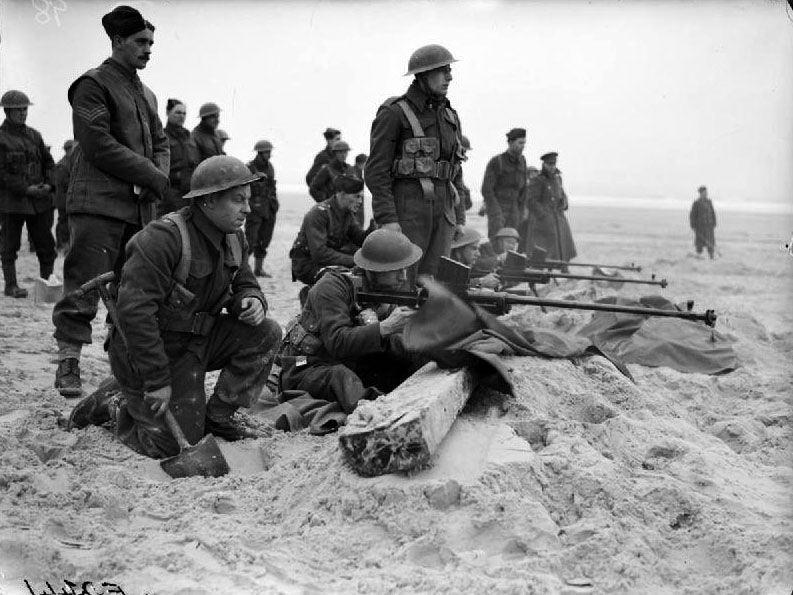May 10-25 1940, The Germans Overrun Belgium and Nortern France

Men of the 1st Royal Welch Fusiliers near Etaples
The German invaded Belgium and quickly overran the Belgium forces along the border. Meanwhile the Germans crossed the Ardennes Forest which the French had thought was unpenetrable. The French lines were quickly overrun and France was cut in two while Belgium would quickly surrender. The day of the invasion Churchill became British Prime Minister.
Belgium had remained officially neutral prior to the German invasion, hoping that the neutrality would allow it to stay out of the war. Despite their hopes, they knew it was more than likely that the Germans would invade France through Belgium, so officially there was no coordination between the French and Belgian forces.
On the morning of May 10th, the Germans began their assault on Belgium and France. They began by landing gliders in Belgian forts and bridges near the border, successfully capturing many of them. By May 11th, the Belgian armies’ front broke, and they retreated to the Dyle Line. As the Belgian forces fell back to the line, the British and French forces began to arrive. While on paper the British and French armies were as large as the German army they faced, and in fact some of the French tanks were actually superior to the German tanks, the Allied tactics lagged behind the Germans, who had learned to successfully coordinate their land forces with their air force. In addition, German tanks were equipped with radios and thus were much more maneuverable .
On May 14th, the French launched an armored counterattack against the German Panzers. The attack was tactically successful, but the French did not have the forces to follow through or continue the attack, so they withdrew.
Meanwhile, to the south, the Germans had successfully crossed the Ardennes Forest with armor. The French had not believed it was possible to do so in force and thus this part of its lines was poorly defended, with few anti-tank or anti-aircraft guns available. The German forces quickly reached the Meuse River at Sedan and under cover of massive air support made a successful crossing of the river. Within a day, the German tanks were in open country moving toward the Channel almost unopposed. The French army was now cut in half, and the British forces were also now nearly surrounded. The Germans, by May 22nd, had effectively won the Battle of the West.
 >
>